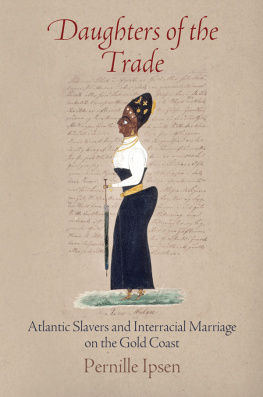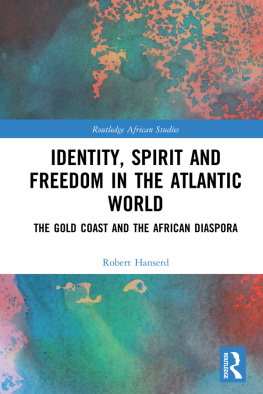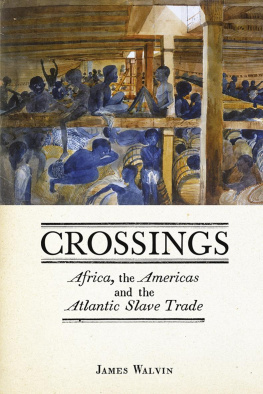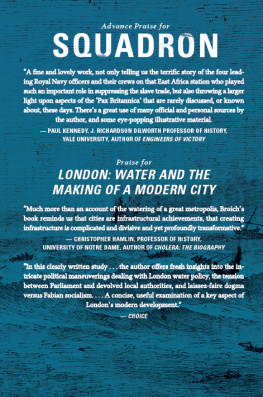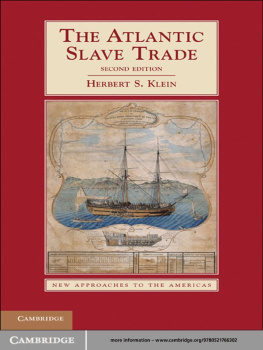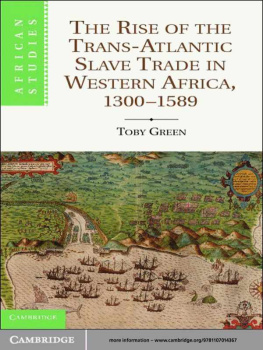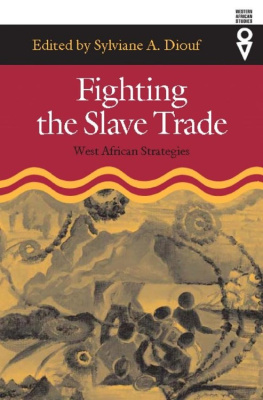
DAUGHTERS OF THE TRADE

THE EARLY MODERN AMERICAS
Peter C. Mancall, Series Editor
Volumes in the series explore neglected aspects of early modern history in the western hemisphere. Interdisciplinary in character, and with a special emphasis on the Atlantic World from 1450 to 1850, the series is published in partnership with the USC-Huntington Early Modern Studies Institute.
DAUGHTERS of the TRADE
Atlantic Slavers and Interracial Marriage on the Gold Coast
PERNILLE IPSEN
PENN
UNIVERSITY OF PENNSYLVANIA PRESS
PHILADELPHIA
Publication of this volume was assisted by a grant from the USC-Huntington Early Modern Studies Institute.
Copyright 2015 University of Pennsylvania Press
All rights reserved. Except for brief quotations used for purposes of review or scholarly citation, none of this book may be reproduced in any form by any means without written permission from the publisher.
Published by
University of Pennsylvania Press
Philadelphia, Pennsylvania 19104-4112
www.upenn.edu/pennpress
Printed in the United States of America on acid-free paper
1 3 5 7 9 10 8 6 4 2
Library of Congress Cataloging-in-Publication Data
A catalogue record for this book is available from the Library of Congress.
ISBN 978-0-8122-4673-5
For Steve
When the Whites Negress has borne him a couple of Mulatto children he cares as much for her and his children as a man does who has his true wife and children in Europe. Some among the Europeans do not wish to leave their family on the Coast even if they know they could live better in Europe.
Ludewig Ferdinand Rmer, 1760
The one I have to thank this time for my poor, wretched life, besides God, is my Mulatinde [Mulatresse]. I can never repay her for her many sleepless nights, her concern for me night and day.
Wulff Joseph Wulff, 1839

Map 1. The Gold Coast and the Danish Conglomerate State in the Atlantic World From 1680 to 1814 the conglomerate state under the king of Denmark consisted of duchies and colonies in present-day Norway, Iceland, the Faroe Islands, Greenland, the Virgin Islands (St. Croix, St. John, and St. Thomas), and a part of northern Germany, besides the kingdom of Denmark. Outside this territory the Danish king had trading posts in India (Tranquebar and the Nicobar Islands) and on the Gold Coast. In the eighteenth century Christiansborg by Osu, in present-day Accra, the capital of Ghana, served as headquarters for the Danish slave trade on the Gold Coast.

Map 2. The Gold Coast In the seventeenth and eighteenth centuries a number of European slave-trading forts were established on the Gold Coast. In the same period towns along the coast grew and developed. Note the proximity of the three Ga coastal towns Osu, Soko, and Aprag.
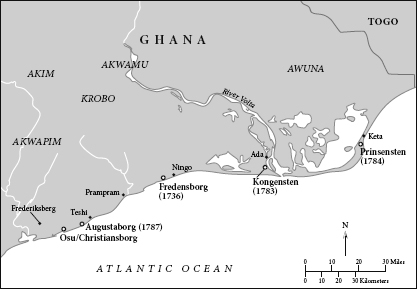
Map 3. Expanding the Danish Presence on the Gold Coast The Atlantic slave tradeand the Danish part of itexpanded over the course of the eighteenth century, and new Danish trading factories were established east of Osu to secure a more permanent hold on a larger part of the trade. The Danes thus had a broader range of contact and influence in a larger area of the coast. The new factories were primarily for slave trading, but they also served as protection for local African trading partners and their families in case of attacks from other African groups. The growing trade also led to an expansion of both Osu and Christiansborg.
INTRODUCTION

Severines Ancestors
Severine Brock was born and raised in Osu, a small town on the Gold Coast. Her first language was Ga, yet it was not surprising when, in 1842, she married Edward Carstensen, the last governor of the Danish Fort Christiansborg. Women in her family had been marrying Danish men for generations. Already by 1800, when Severines grandmother married merchant H. C. Truelsen and lived with him in a European-style stone house with storage rooms and cobblestones, it had become a familiar choice for Ga women of a certain status to marry European men. The practice of interracial marriage on the Gold Coast began shortly after Europeans started trading in the area in the seventeenth century and continued in Osu for generations after the official Danish slave trade was abolished in 1803. The practice was called cassare or calisarefor setting up houseand both the word and the practice were inherited from earlier Portuguese traders in West Africa. When Severine married Edward, she was only about sixteen years old, but she could draw on many generations of experience with Danish language and culture, and on a hybrid Ga-Danish culture with deep historical roots in Osu as well as in the larger world of the Atlantic slave trade.
This book is the story of the century and a half that preceded Severine Brocks marriage to Edward Carstensen; of six generations of Ga families in Accra marrying their daughters to Danish men at Christiansborg. The story begins in the early eighteenth century, when Christiansborg became the headquarters for the Danish slave trade in West Africa, continues over the course of the century, and ends in 1850, when the fort was sold to the British. It traces the changing power dynamics of the Atlantic world. It shows how the increasing strength of the European colonial system shaped individual lives and families of West African and European slave traders, and how the spatial organization and the material culture of these families shifted in a
Stories like those of Severine and the other women in her family are part of a larger history of the racialization of social difference that took place in West Africa during the era of the slave trade. In the first generation of Euro-African marriages in Osu, neither Ga nor Danes attached very distinct meanings to racial difference. For this early generation, social status and position in their shared world was determined primarily by class and gender; race, though present as a relatively flexible category, remained an indeterminate marker of social hierarchy. As the slave trade evolved over the eighteenth century, however, race gained importance as a social marker. At Christiansborg the Danes distinguished between Euro-Africans Over generations, intermarrying with Europeans opened a special position for Euro-Africans in an increasingly stratified social hierarchy, which was defined by race as well as class and gender.
The local history of interracial marriage in Osu was a particularly intense expression of a process that happened throughout the eighteenth-century Atlantic world. Marriages and less formal relationships across lines of ethnicity and skin color played a central role in the production of racial difference throughout the early modern world, but nowhere were negotiations over social difference more critical than in the trade in human beings, which was both enabled by and contributed to a hierarchy of racial difference. For both African and European slave traders it was crucial to uphold clear lines between people who were for sale and people who were not, and definitions of difference between slave and free were therefore at the center of negotiations in the trade. The process of attaching meaning to racial difference took place in response to this need to distinguish slave from free, and the families at the center of
Next page
